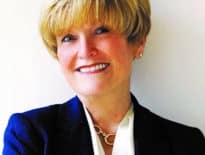
A recent survey by BAI Banking Strategies found that, across all generations, consumers who switched banks were most likely to do so in pursuit of lower fees. iStock illustration
Large financial institutions charge their customers hundreds of millions of dollars in fees, but some of Massachusetts small and or regional banks see room to earn new deposits by going in the other direction.
A new consumer survey backs them up.
BAI Banking Strategies recently polled American bank customers and found that, across all generations, consumers most often selected a new primary financial institution because it charged the lowest fees.
Bank fees have historically been instituted to cover operational costs as well as provide another source of revenue and means to mitigate risk. But over time, they’ve become a key part of some financial institutions’ revenue streams.
As of Sept. 30, TD Bank has earned $654.65 million in bank fees this year, or 57.9 percent of its non-interest income according to financial statements filed with the FDIC.
By comparison, Arlington-based Leader Bank only took in $222,000 dollars in service charges – less than one percent of its NII. While Hudson-based Avidia Bank’s service charges make up 19.1 percent of its NII, the same amount as M&T Bank, Avidia made $2.56 million in service charges while M&T Bank raked in $269.43 million.
Consumer, Regulator Expectations Shift
Traci Michel, chief operating officer and chief strategy officer at Chelsea-based Metro Credit Union believes that there has been a major shift in consumer expectations over the last four to five years that can be attributed to the actions of larger institutions.
Subscription services are becoming more prevalent in the market, as well as across the economy, she added.
“For a lot of people, having time back in their life and having peace of mind that they aren’t going to be nickel-and-dimed for something is really important to them,” she said. “It’s really top of mind. So, we’ve been shifting our focus into: How can we simplify? How can we give members back time, and how can we give them peace of mind?”
Michel added that the bank is shifting to provide positive reinforcement to its customers, instead of negative reinforcement. Instead of charging fees for physical statements, for example, Metro instituted a rewards program where members can receive points for signing up for electronic statements.
Reading Co-Operative Bank also shifted its thinking towards fees including the reduction of its NSF fee. Instead of charging $30 per item, the fee was capped to $15 per day. Additionally, a bank account will not be charged for being overdrawn unless the negative balance eclipses $100. Bank executives said they also eliminated some other fees.
Overdraft fees, in particular, have come under scrutiny from federal regulators. As part of President Joe Biden’s anti-“junk fee” campaign across many sectors of the economy, the CFPB recently finalized a rule limiting overdraft fees banks can charge.
The rule states that banks may charge a flat overdraft fee of $5, a fee that covers their costs and losses or banks can charge any fee so long as they disclose the terms of the overdraft loan the way they would for any other loan, typically expressed as an annual percentage rate or APR.
Bye-Bye Fees?
With the increase in digital banking and the overall negative consumer sentiment towards fees, the banking industry is trending towards a landscape where fees are minimized if not eliminated, executives say.
Brian Canina, president and chief operating officer of Holyoke-based PeoplesBank, said that it is increasingly difficult for banks to charge fees as customers are searching out fee-free banking.
“We can feel that pressure in the market,” he said.
Numerous banks large and small eliminated NSF fees in 2022. And Metro eliminated its return deposited item fee in 2024.
Michel noted that consumers have very little to no control over the transaction and the credit union felt that members shouldn’t be charged for that transaction. Additionally, this was a transaction that was typically a “heavy lift for financial institutions.”
“The cost models are definitely changing, and it's something we have to continuously evaluate,” she said.
However, financial institutions need to strike a delicate balance between fees and their very real expenses. Some transactions or services come with a cost to the bank. So, while small and regional banks might not charge as many fees as larger institutions, it’s hard to get rid of them entirely.
“I think there will always be a place for a service charge for value-added services,” Michel said. “I don't necessarily see service charging going away, but that concept of negative reinforcement for behavior through fees, you can definitely see that dwindling almost to a near-zero point at this point, especially in terms of what consumers will tolerate.”
Still, Michel believes that financial institutions should be looking to offset the costs of eliminating or reducing some fees.
“I think smaller FI’s need to look at the big picture, calculate those offsets for themselves, and find the areas where they're either going to save or make money to offset the loss in revenue,” she said. “There's the relationship factor that the checking account tends to drive a multi-product service relationship that's a bit more dynamic, that has payments, income associated with it – and there's operational efficiency.”

Sam Minton
Michel said overdraft fees are one example of how a fee can actually reduce operational efficiency and customer satisfaction, as call center employees are tied up trying to fix and possibly solve a problem that ends up with the bank reversing the fee. On the other side of the coin, if the charge remains, customers can be left frustrated that they took time out of their day to call and still have to deal with fees.
Canina said that PeoplesBank still charges fees for more specialty services, which could persist even as sentiment towards NSF and overdraft fees grows more and more negative.
“We do charge fees for more specialty services that are more individually driven by customers, the ones that we feel are that value add,” Canina said. “Added services that customers would expect to pay for, and then you just kind of monitor the landscape. It's really more based on the competition and market.”
Seeking a Marketing Edge
As small and regional banks look to compete with larger institutions, marketing their lower fees can be a crucial tool to gather deposits and customers. Canina noted that PeoplesBank markets itself as a “fee-free bank,” while also highlighting how it aspires to make banking simpler.
“That is what we do to differentiate ourselves from the national and larger regional competitors. They are known to charge more fees,” he said. “They have a much bigger market share in the majority of the markets that they're in, particularly the larger urban markets. So, when we move into those markets, and look to compete, that is a way that we can differentiate ourselves.
He added that banks use the large market share as a way of charging more fees with the belief that they won’t switch financial institutions. This leaves smaller and regional banks battling to make customers decide that enough is enough.
Shanna Cahalane, vice president and director of marketing at Reading Co-operative Bank, said as the bank markets itself to new customers, it aims to gain trust by discussing its fees. In addition, the bank employs Spanish speakers in areas where the language is common to ensure that Reading Co-operative is living up to its “Banking for All” tagline.
“We talk more about being transparent and making sure that people understand the fees that are out there,” she said.





